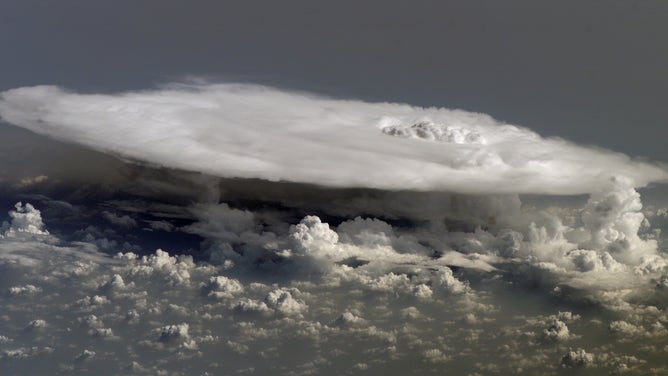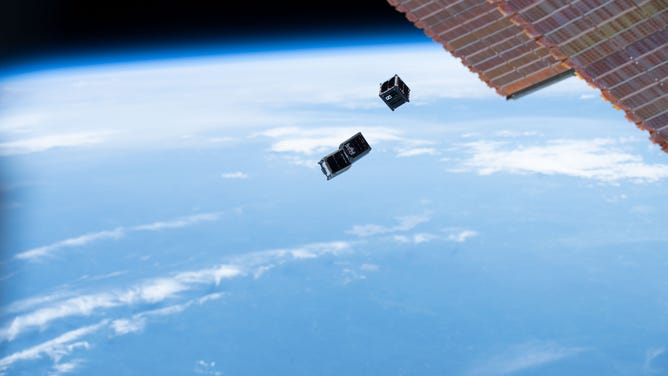Ice clouds to get closer look in new NASA study that aims to better understand atmosphere
The investigation will include a pair of approximately one-foot-tall cubic satellites that will observe the clouds’ daily cycle of ice content in the hopes of getting better data to feed computer forecast models.
6 Types of Clouds you might see during a Severe Thunderstorm
Here are 6 types of cloud that indicate a severe thunderstorm is going to occur in your area.
NASA has selected a new mission to study ice clouds that develop throughout tropical and sub-tropical regions. Called PolSIR, the mission will help scientists better understand the atmosphere.

A new NASA mission, PolSIR, short for Polarized Submillimeter Ice-cloud Radiometer, will study high-altitude ice clouds, such as this cloud as seen from the International Space Station in 2008. Understanding how such clouds change throughout the day is crucial for improving global climate models.
(NASA / NASA)
The investigation will include a pair of approximately one-foot-tall, cubic satellites that will observe the clouds’ daily cycle of ice content. Called CubeSats, these instruments will fly in orbits separated by three to nine hours.
According to Karen St. Germain, lead of NASA’s Earth Sciences Division, the radiometers will determine how and why ice clouds in tropical and sub-tropical regions change throughout the day by measuring the radiant energy the clouds emit.

FILE - CubeSats above the Earth.
(NASA / NASA)
Information gathered by the PolSIR instrument will allow for the simulation of ice clouds in global climate models, NASA said.
"Studying ice clouds is crucial for improving climate forecasts – and this will be the first time we can study ice clouds in this level of detail," said Nicola Fox, associate administrator for the Science Mission Directorate at NASA Headquarters in Washington, D.C.
The mission is led by Ralf Bennartz, principal investigator at Vanderbilt University in Nashville, Tennessee, and by Dong Wu, deputy principal investigator at NASA’s Goddard Space Flight Center in Greenbelt, Maryland.
